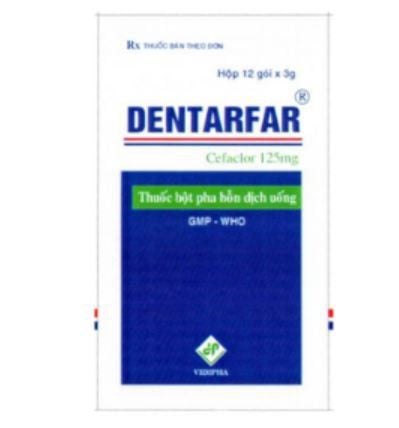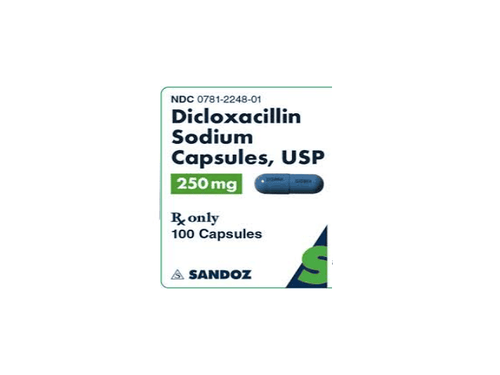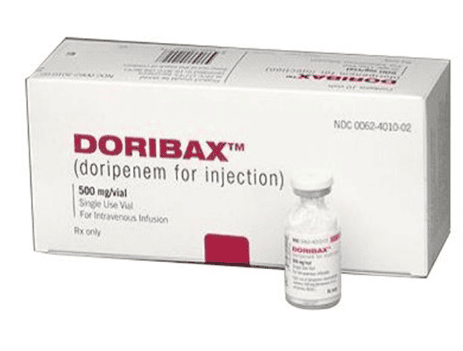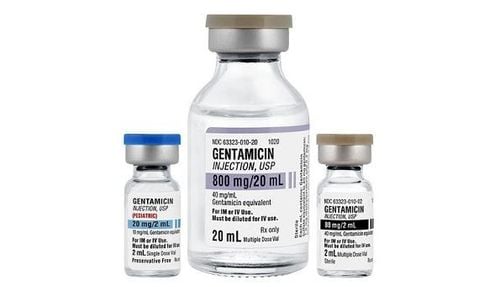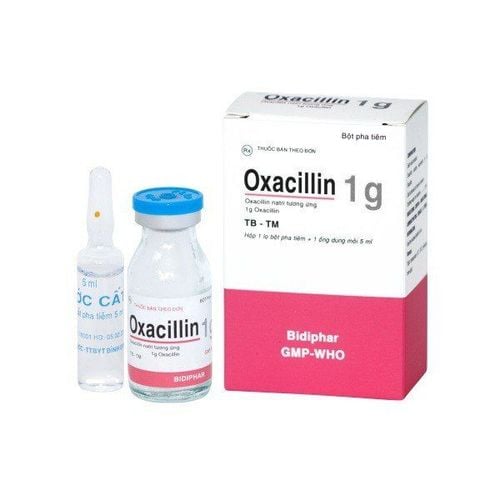This is an automatically translated article.
Sancinor is a semi-synthetic antibiotic of the Cephalosporin group of the 4th generation because of its broader spectrum of action than the 3rd generation Cephalosporins. It is administered by injection to treat a wide variety of bacterial infections by blocking synthesis of mucopeptides in the cell wall of bacteria.
1. What is Sancinor?
Sancinor contains Cefepime, L-Arginine ingredients, of which the main active ingredient is Cefepime (in the form of Cefepime Hydrochloride) which is a semi-synthetic antibiotic of the Cephalosporin group of the 4th generation due to its broader spectrum of action than the third generation Cephalosporins. 3 . It is used to treat many types of bacterial infections by blocking the synthesis of mucopeptides in the cell walls of bacteria. Sancinor is produced in the form of a vial of powder for injection, with the content of each vial is 1g of Cefepim.
2. In what cases is Sancinor indicated?
The drug is used to treat very serious infections, which have not been helped by conventional antibiotics to limit drug resistance such as:
Severe urinary tract infections with complications, pyelonephritis. Pneumonia due to hospital-acquired or severe community-acquired pneumonia. Severe infections of the skin and soft tissue areas. Meningitis . Sepsis . Complicated intra-abdominal infections (usually in combination with intravenous metronidazole). Fever accompanied by neutropenia in adults and children over 2 months of age.
3. Contraindications of the drug Sancinor
Absolutely do not use Sancinor in patients who are sensitive to Cefepime, L-Arginine or any other ingredient of the drug or Cephalosporin group; The patient has a history of allergy or hypersensitivity to penicillin.
4. Dosage and usage of the drug Sancinor
4.1. How to use Sancinor Sancinor is prepared in the form of a vial of powder for injection and infusion. Sancinor is used according to the doctor's prescription, so the patient is not allowed to arbitrarily mix and administer the drug at home, but need to go to a reputable medical facility to have a medical examination and have a doctor perform the medicine. . The drug is administered intravenously, intravenously or intramuscularly.
Depending on the infection status, Sancinor is indicated by deep intramuscular injection, slow intravenous injection over 3-5 minutes of a solution containing 100mg/ml or intermittent intravenous infusion over about 30 minutes. Sancinor should be administered intramuscularly only for mild to moderate infections or when intramuscular injection is more appropriate for the patient.
4.2. Sancinor Dosage Sancinor dosage may vary depending on factors such as age, weight, infection status of the patient, drug history, special circumstances (pregnancy and lactation, renal failure).
Adults
Severe infections in the abdomen: Intravenous 2g / time x 2 times / day (each injection is 12 hours apart), used for 7-10 days. Should be combined with antibiotic Metronidazole (separate infusion). Pneumonia due to infection in hospital: Dose 1 - 2g / time x 2-3 times / day (each injection is 8-12 hours apart). The duration of treatment can vary from 7 to 21 days; usually long-term treatment if the patient is infected with Pseudomonas. Community-acquired pneumonia: Dose 1-2g/time x 2 times/day (each injection is 12 hours apart), using the drug for 10 days. Skin and skin structure infections (uncomplicated): Intravenous injection 2g/time x 2 times/day (each time 12 hours apart), prolonged use for 10 days. Urinary tract infections (with or without complications): In case of mild to moderate disease, use intramuscularly or intravenously 0.5 - 1g/time x 2 times/day (each time 12 hours apart). last for 7-10 days. Severe cases: Intravenous injection 2g / time x 2 times / day (each time 12 hours apart), used for 10 days. Meningitis and CNS damage caused by susceptible Gram-negative bacteria (eg, H.influenzae, Neisseria meningitidis, E. coli, P. aeruginosa) or by susceptible Gram-positive bacteria such as Streptococcus pneumoniae , Staphylococcus aureus, S. epidermidis: Intravenous dose of 2g/time x 3 times/day (8 hours apart). The duration of treatment depends on the individual patient's response. For infections caused by H. Influenzae, or N. meningitidi, the recommended duration of treatment is 7 days, for S. pneumoniae is 10-14 days and for gram-negative anaerobic bacteria is 21 days. Febrile neutropenia (monotherapy): Intravenous 2g/time x 3 times/day (8 hours apart), continued for 7 days or until the neutropenia clears up. . Brain abscess, prevent infection after neurosurgery: 2g/time x 3 times/day (8 hours apart), usually in combination with antibiotic vancomycin (500mg, every 8 hours). Children
Skin and skin structure infections (uncomplicated) and pneumonia: Intravenous injection 50mg/kg/time x 2 times/day (each dose is 12 hours apart), used for 10 days. Febrile neutropenia: Intravenous 50mg/kg/time x 3 times/day (each dose is 8 hours apart), used for 7 days or until neutropenia is gone. Urinary tract infections with or without complications: Intramuscular or intravenous injection 50mg/kg/time x 2 times/day (each dose 12 hours apart), lasting for 7-10 days. Purulent meningitis and CNS damage caused by susceptible Gram-negative bacteria (eg, H.influenzae, Neisseria meningitidis, E. coli, P. aeruginosa) or by susceptible strains of gram-positive bacteria (eg. eg: Staphylococcus aureus, Streptococcus pneumoniae, S. epidermidis): Children over 2 months old to 15 years old should be given a dose of 50mg/kg/time x 3 times/day, (each dose is 8 hours apart), used for a long period of time. 7-10 days. Duration of treatment depends on individual patient response based on response For infections caused by H. Influenzae, or N. meningitidis, the recommended duration of treatment is 7 days, because S. pneumoniae is 10-14 days and due to gram-negative anaerobic bacteria 21 days. Other subjects
Patients with renal impairment: Adjust dosage in patients with renal impairment as follows:
People with renal failure with creatinine clearance (ClCr) 30-60ml/min: Use the initial dose equal to that for functional individuals. normal kidney. Patients with renal failure with creatinine clearance (ClCr) 10 - 30 ml/min: The dose in 24 hours is 50% of the usual dose. Patients with renal failure with creatinine clearance (ClCr) < 10ml/min: The dose in 24 hours is 25% of the usual dose. Adults on hemodialysis receive a first dose of 1 g Sancinor once daily, then 500 mg once daily for infections or 1 g once daily for infections in neutropenic patients. feverishness.
5. Undesirable effects of the drug Sancinor
Unwanted side effects that may be encountered when using Sancinor are as follows:
Skin and systemic reactions: Irritation at injection site, pruritus, maculopapular rash, rash, fever. In some cases, Quincke's edema (edema of the face, edema of the pharynx and vocal cords). Rare: Toxic skin necrosis, Steven-Johnson syndrome. Digestive system: Oral candidiasis, abdominal pain, nausea, vomiting, diarrhea, pseudomembranous colitis. On the liver: increased liver enzymes. Nervous system: Dyspnea, tremor, neuromuscular excitability, headache, dizziness, confusion, hallucinations, convulsions. Blood: Thrombophlebitis (if intravenous), positive direct Coombs test without hemolysis, eosinophilia, granulocytopenia, lymphocytosis. Renal-urinary and genitourinary systems: Decreased glomerular filtration rate, increased blood urea and creatinine, vaginitis.
6. Precautions when using Sancinor
When using Sancinor, the following should be taken with caution:
Due to cross-reactivity between penicillins and cephalosporins, the patient must inform the doctor about his or her allergy history to penicillin, penicillin or other drugs, if any. , and any medications the patient was currently taking before starting treatment. Sancinor requires a dose reduction in patients with renal impairment. Prolonged use of antibiotics, including Sancinor, can cause bacterial superinfection, fungal infection or bacterial proliferation, including Clostridium difficile infection associated with diarrhea and pseudomembranous colitis. Sancinor solutions should be visually inspected prior to injection for precipitation. Some cephalosporin antibiotics (including Sancinor) have the potential to cause seizures and convulsions, especially in patients with impaired renal function without a dose adjustment of Sancinor. Sancinor should be used with caution in patients with a history of convulsions, especially in patients with renal impairment because of the possible increased risk of convulsions. During treatment with Sancinor, if a patient develops convulsions, Sancinor should be discontinued immediately and appropriate antiepileptic drugs used. The efficacy and safety of Sancinor in neonates and infants under 2 months of age have not been established. Use in Pregnancy: Studies in experimental animals have not shown that Sancinor has a toxic effect on the fetus. However, there are no adequate and well-controlled studies on the use of Sancinor in pregnant women, so Sancinor should only be used during pregnancy when prescribed by a doctor, when the benefits outweigh the risk factors. . For women who are breast-feeding: Sancinor is excreted in small amounts in breast milk, affecting the nursing infant such as changes in bacteria only in the intestine, causing gastrointestinal disturbances, problems with laboratory tests to assess infection. infection when the child has a high fever. Stop breast-feeding in mothers taking Sancinor For those who are driving or operating machinery: Because Sancinor can cause headaches, dizziness or hallucinations, caution should be taken when using it for drivers, operate machinery or when doing work that requires alertness. Above is important information about Sancinor antibiotic. Understanding the drug will help patients better understand the use and problems encountered when using. Note, Sancinor is a prescription drug, patients need to use the drug as prescribed by the doctor, absolutely do not self-treat at home.




